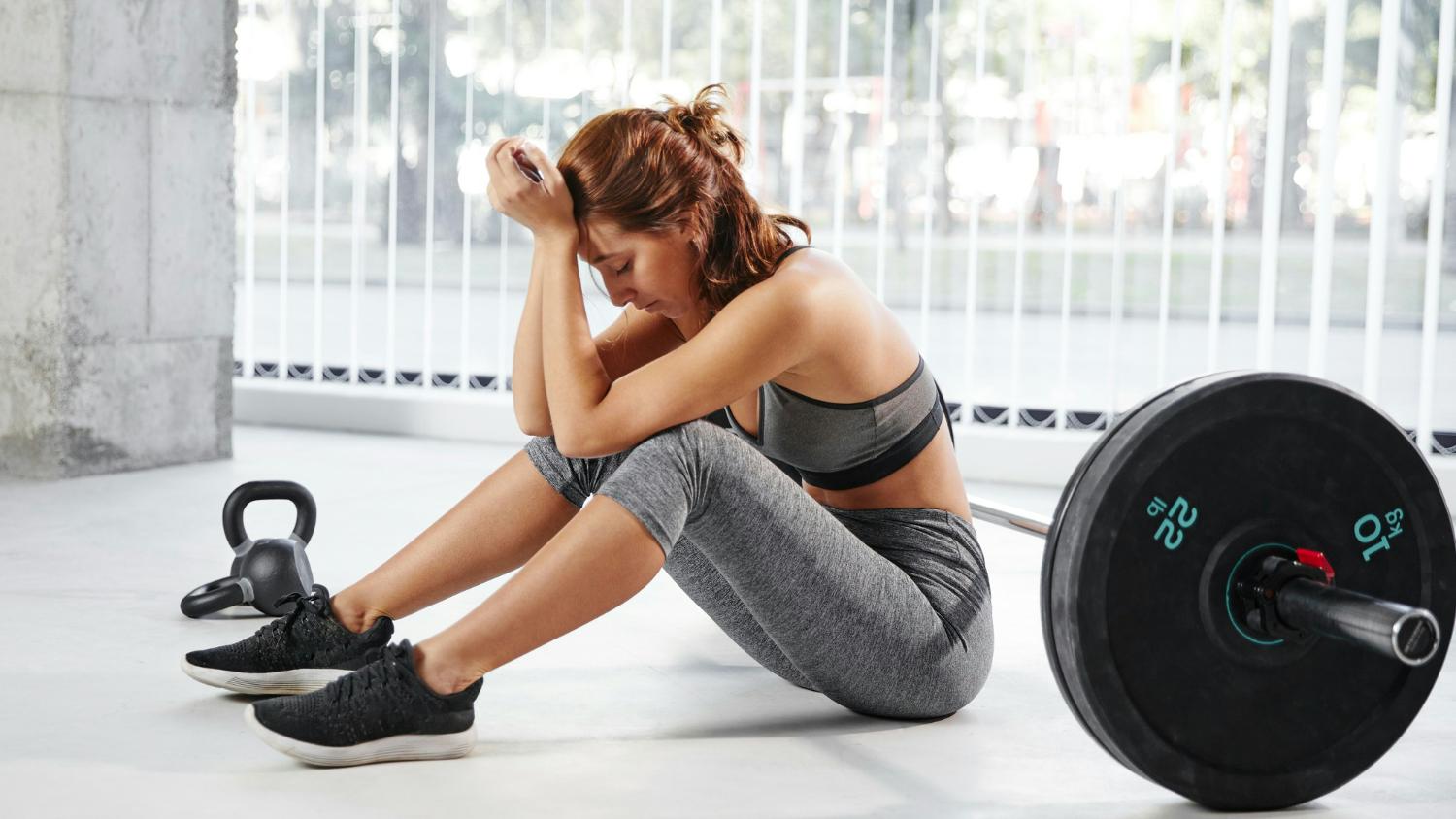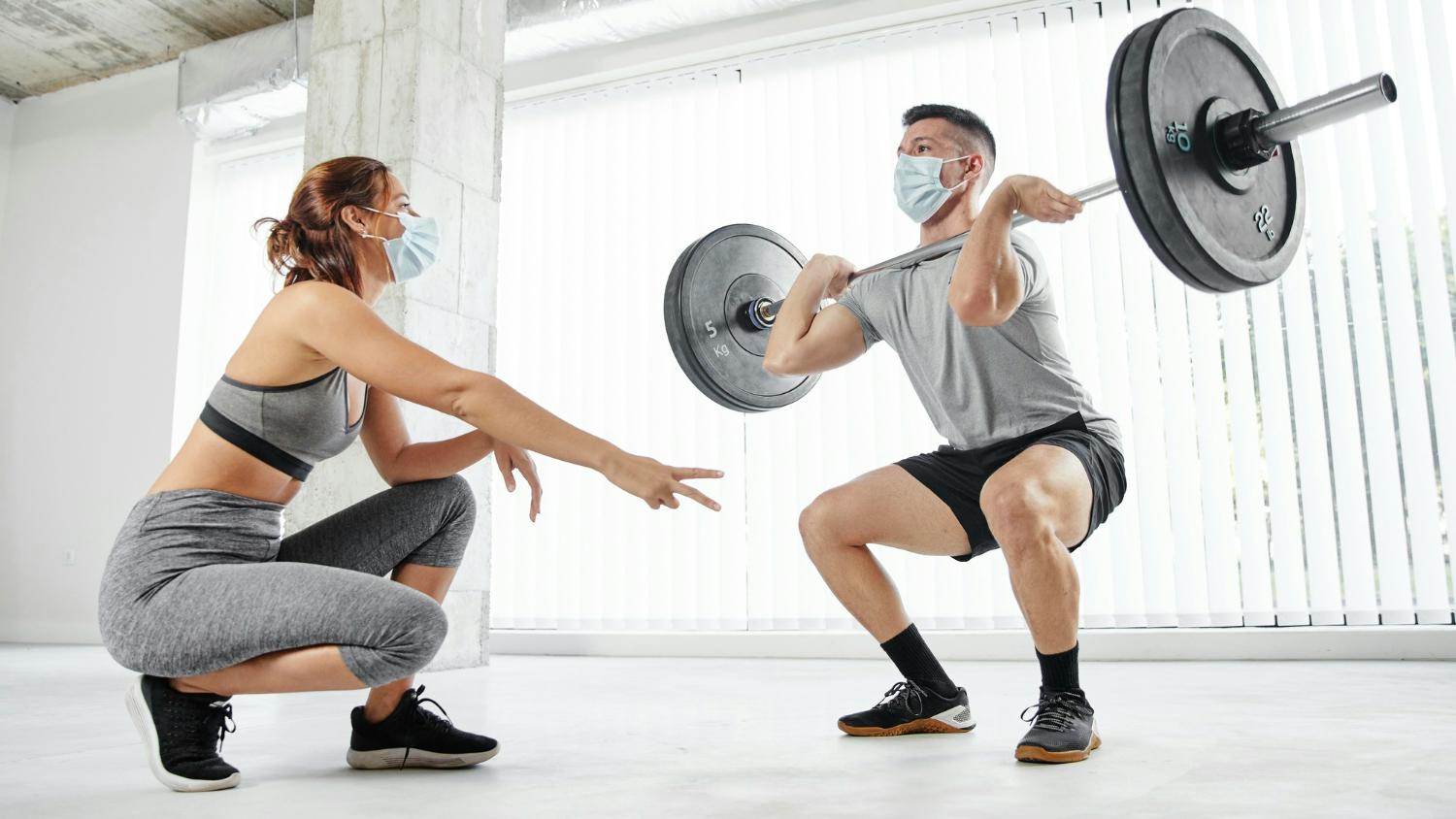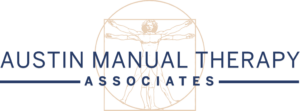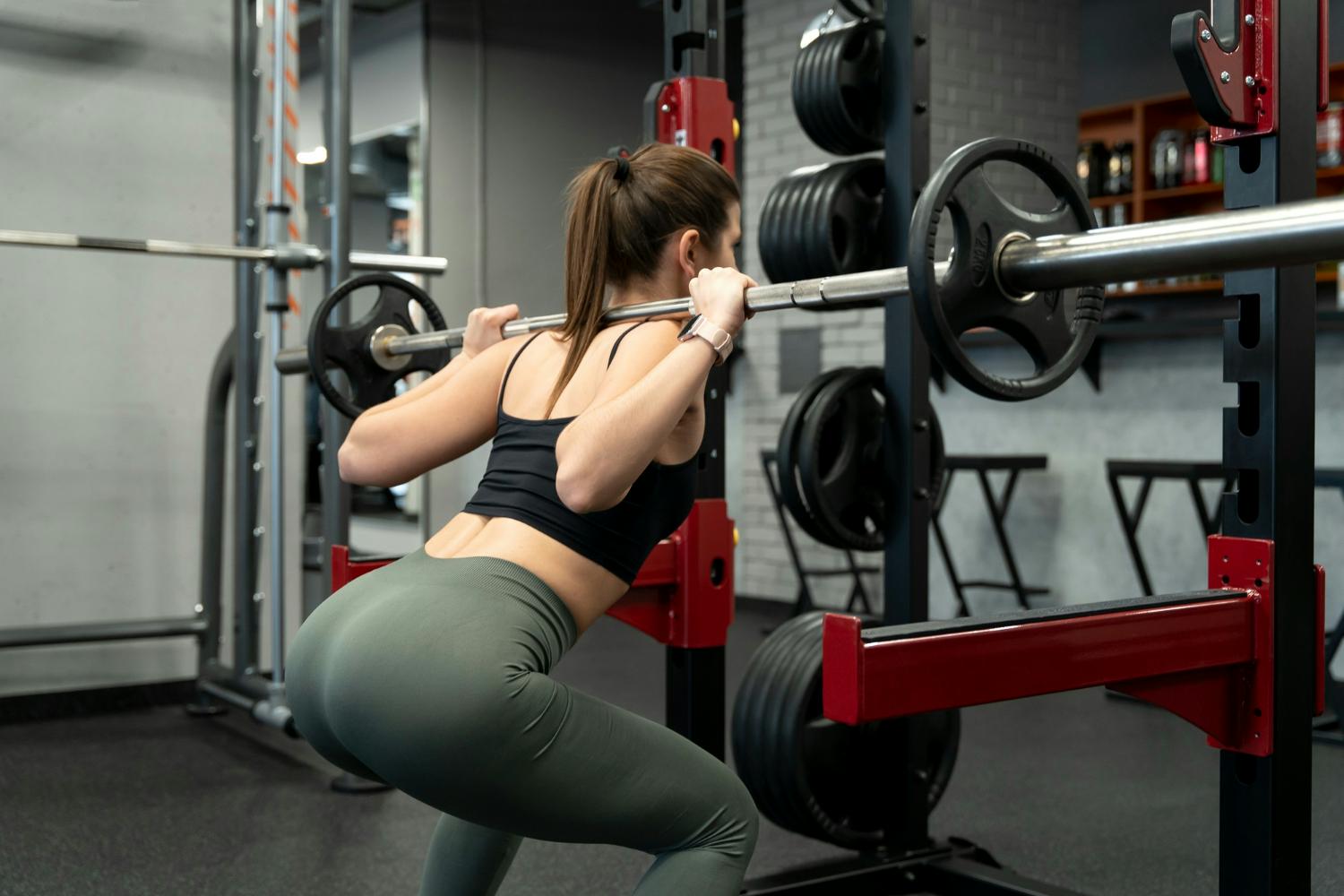Introduction
Experiencing lower back pain from lifting weights is a common yet often preventable issue that plagues many athletes and fitness enthusiasts. This comprehensive guide delves into the anatomy of the lower back, the causes of this specific type of pain, and effective methods for prevention and treatment.
The Lower Back Anatomy
Understanding the lower back’s complex structure is key to comprehending why and how pain occurs during weightlifting. Lower back pain from poor posture can cause muscle imbalances, and overuse, and can sometimes be caused by inadequate warm-up or cool-down routines.
Muscles
The lower back comprises several muscle groups, including the erector spinae, which are crucial for maintaining proper posture and stability during lifting exercises. This muscle group is the opposite of the front abdominal muscles. Your lower back muscles work tirelessly to support the spine, and any imbalance or overexertion can lead to pain or injury.
Bones
The lumbar region of the spine, consisting of five vertebrae, plays a critical role in weight-bearing and movement. It’s designed to withstand considerable stress, but improper lifting techniques and poor posture, including too much heavy lifting, can lead to injuries like fractures or slipped discs.
Nerves
The nerves in the lower back, particularly the sciatic nerve, are sensitive to pressure and strain. When these nerves are compressed or irritated, it can result in pain that may radiate down to the legs, affecting mobility and lifting capability.
Causes of Lower Back Pain from Lifting Weights
Identifying the root cause of lower back pain is essential for effective treatment and prevention. Any type of physical activity must be done with enough consideration of the strength limit of the individual. The following are some of the most common causes of lower back pains from lifting weights.
Herniated Disc
A herniated disc occurs when the soft inner material of the disc protrudes through the outer ring. This can happen due to the excessive strain of lifting heavy weights, leading to pain, numbness, or weakness.
Ligament Tears
The ligaments in the lower back can tear or stretch from overuse or sudden, awkward movements during lifting, especially when lifting excessive weights. These injuries can cause severe pain and a decrease in stability in the lumbar region and affect proper muscle function.
Pulling a Back Muscle while Weightlifting

Muscle strains are among the most common injuries in weightlifting. They can occur from lifting too heavy, too quickly, or without proper form, leading to sharp pain and difficulty moving. These types of injuries will often cause loss of muscle strength as the body recovers from injury.
Weightlifter’s Back
This term describes a condition where there’s a chronic strain on the lower back due to repetitive lifting, especially of heavier weights. It’s often a cumulative effect of minor injuries that haven’t been properly addressed, leading to chronic pain and stiffness.
Factors that can put you at risk for these causes
Recognizing the risk factors is a crucial step in preventing lower back pain from weightlifting. While lifting weights can be a great way to build strength and improve overall fitness, it also puts stress on the lower back, making an individual susceptible to injury.
Improper Form
Incorrect form, such as rounding the back during a lift, puts unnecessary strain on the lower back, increasing the risk of injury. Always make sure that you follow a proper starting position when lifting extra weight or heavy weights.
Heavy Weights
Lifting weights that are too heavy for one’s current strength level can overwhelm the lower back muscles and spine, leading to injuries. Following simple techniques such as planting your feet flat on solid ground can greatly minimize any physical injury caused by heavy weights. Knowing your maximum strength will also ensure that you do not push yourself over the limit.
Lack of Warm-up
Skipping a proper warm-up can leave the muscles and ligaments in the lower back stiff and more prone to injury during intense lifting sessions. Be sure to follow proper warm-up before doing any physical exercise.
How to Diagnose the Causes
A medical professional can diagnose the specific cause of lower back pain through physical examinations, patient history, and imaging tests like X-rays or MRIs. These diagnostics are crucial in tailoring the most effective treatment plan.
Treatments for Lower Back Pain from Lifting
Addressing lower back pain requires a multifaceted approach depending on the severity and cause of the injury.
RICE
The RICE method (Rest, Ice, Compression, Elevation) is effective for the initial treatment of acute injuries. It helps reduce swelling and pain in the affected area.
Massage
Massage therapy can be beneficial in relieving muscle tension, improving blood flow, and aiding in the healing process of strained muscles.
Physical Therapy
Physical therapy is an effective treatment for lower back pain caused by lifting, often focusing on improving strength, flexibility, and posture to alleviate pain and prevent future injuries. Patients experiencing this type of pain can benefit from a tailored physical therapy program, which might include exercises to strengthen the core muscles, stretching routines to enhance flexibility, and education on proper lifting techniques to avoid strain.
Non-steroidal anti-inflammatory Drugs (NSAIDs)
NSAIDs, such as ibuprofen or naproxen, can help reduce inflammation and provide pain relief. However, they should be used cautiously and under a doctor’s supervision.
Alternative Treatments

Acupuncture
Acupuncture can offer relief by stimulating specific points in the body, potentially reducing pain and speeding up recovery.
Chiropractic Care
Chiropractic adjustments can realign the spine, alleviating pressure on nerves and muscles, and improving overall function.
Recovery from Lower Back Pain
Recovering from lower back pain caused by lifting can be a frustrating and daunting process. It is important to remember that the road to recovery requires patience, rest, proper treatment, and a gradual reintroduction to weightlifting. By following these steps, you can effectively recover from lower back pain and get back to your regular training routine safely.
Expected Time for Healing
The healing time can vary greatly, from a few days to several weeks or months, depending on the injury’s severity and the individual’s overall health and fitness level.
Steps for a Healthy Recovery
A healthy recovery includes following the prescribed treatment plan, engaging in gentle rehabilitation exercises, and gradually increasing the intensity of workouts to prevent re-injury.
Prevention Tips
Prevention is crucial in avoiding recurrent lower back pain and ensuring a safe and effective weightlifting routine.
- Warm up and stretch before lifting
Before starting any weightlifting session, it is essential to warm up your muscles and prepare them for the workout ahead. Engaging in light cardio exercises like jogging or jumping jacks can increase blood flow to the muscles and help reduce the risk of injury. Additionally, incorporating dynamic stretches that target the lower back, such as torso rotations or cat-cow stretches, can help loosen up the muscles and improve flexibility.
- Use proper form
Proper form is crucial when lifting weights to prevent strain on the lower back. Make sure to maintain a neutral spine position, engage your core muscles, and lift with your legs rather than your back. Avoid rounding or arching your back during exercises and focus on keeping it stable and supported.
- Gradually increase weight and intensity
Avoid the temptation to lift heavy weights right away. Gradually increase the weight and intensity of your workouts to allow your muscles and ligaments to adapt and strengthen over time. Pushing yourself too hard too quickly can lead to injury.
- Listen to your body
Pay attention to any warning signs or discomfort during your workouts. If you experience pain or strain in your lower back, stop immediately and assess the situation. Continuing to lift with pain can worsen your injury and delay your recovery.
Warm-up and Cooldown Practices
A thorough warmup is essential before any physical activity, especially weightlifting. It increases blood flow to the muscles, enhancing flexibility and reducing the risk of injury. By raising your body temperature and increasing circulation, your muscles become more pliable and ready to handle the stress of lifting weights.
Once you have completed your workout, it is important to cool down properly as well. This helps to reduce muscle soreness and prevent any potential injuries.
A proper cooldown routine should consist of light aerobic exercise, such as walking or cycling, for about 5-10 minutes. This helps to gradually lower your heart rate and blood pressure, allowing your body to transition from an intense workout to a resting state.
Muscle Strengthening Exercises

Strengthening the core and back muscles is vital for providing better support to the spine during lifting activities. By focusing on strengthening the core and back muscles, individuals can provide better support to their spines during lifting activities and reduce the risk of lower back pain.
Some effective exercises to strengthen the core and back muscles include:
- Planks: Start in a push-up position, resting on your forearms. Keep your body in a straight line from head to toe, engaging your core muscles. Hold this position for as long as you can maintain proper form.
- Superman exercise: Lie face down on the floor with arms extended overhead and legs straight. Lift your arms, chest, and legs off the floor simultaneously, engaging your lower back muscles. Hold this position for a few seconds before lowering back down.
- Deadlifts: Stand with feet shoulder-width apart and a barbell in front of you. Bend at the hips and knees to grip the barbell, keeping your back straight and core engaged. Lift the barbell by extending your legs and hips, keeping your back straight. Lower the barbell back down to the starting position and repeat.
Equipment Considerations for Prevention
Using proper equipment, like weightlifting belts and supportive shoes, can help maintain correct posture and distribute the load more evenly, reducing the strain on the lower back.
When to Seek Medical Help
Medical assistance should be sought if an individual experiences pain that is severe, does not improve with home treatment, or if there are symptoms like numbness or weakness in the limbs.
Austin Manual Therapy Associates provides personalized and expert physical therapy in Austin and other neighboring cities. Our experienced therapists use advanced techniques and cutting-edge equipment to help you recover quickly and get back to enjoying life pain-free. Trust us to provide exceptional care and achieve your rehabilitation goals.
Conclusion
Lower back pain from lifting weights can significantly impact one’s quality of life and lifting performance. However, with the right knowledge, treatment, and preventive measures, it is possible to manage and prevent this pain, allowing for a healthy and sustained weightlifting practice.
FAQs
Q: How do you relieve back pain from weight lifting?
A: Immediate relief can be achieved through the RICE method, gentle stretching, and over-the-counter pain relievers. For persistent pain, consult a healthcare provider for a tailored treatment plan.
Q: Should you lift weights with lower back pain?
A: It’s generally advised to avoid weightlifting until the back pain is fully resolved. Returning to lifting should be gradual and under the guidance of a medical professional or qualified trainer.
Q: Is it normal to have lower back pain after a workout?
A: While mild muscle soreness after a workout is normal, persistent or severe back pain indicates a potential injury or improper lifting technique and warrants a review of your workout regimen and possible medical consultation.





